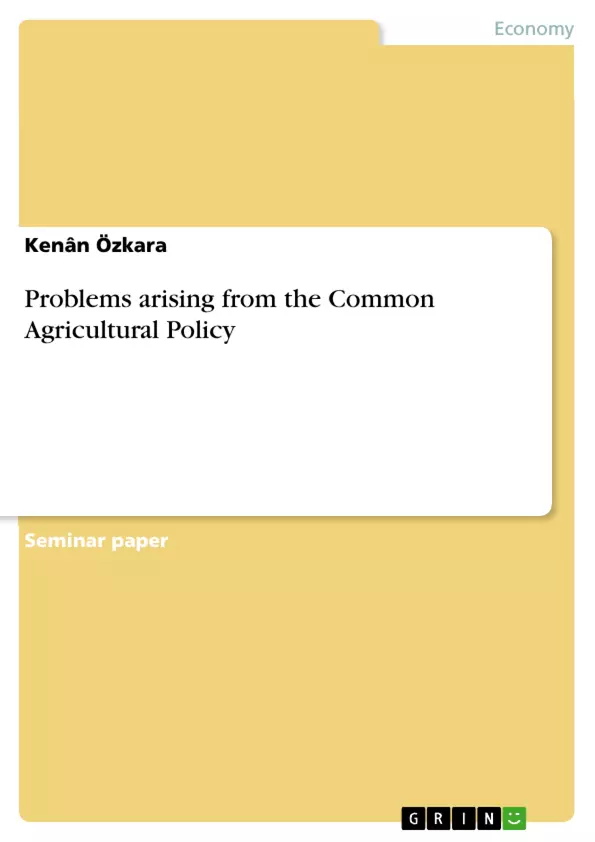Das wirtschaftliche Zusammenwachsen innerhalb der Europäischen Union (EU) der letzten Jahrzehnte sowie die Verwirklichung des europäischen Binnenmarktes im Jahr 1993 zwangen sowohl die Mitgliedstaaten als auch die Unternehmen, sich neuen Herausforderungen zu stellen. Durch die Öffnung der nationalen Märkte sahen und sehen sich die Staaten und ihre heimischen Unternehmen einem steigenden Wettbewerbsdruck gegenüber, den sie mitunter mit unrechtmäßigen Mitteln zu unterlaufen versuchen: Wettbewerbsbeschränkende Absprachen zwischen Unternehmen auf der einen Seite und staatliche Maßnahmen auf der anderen Seite vermögen den Wettbewerb gleichermaßen zu beeinflussen.
Um die kompetitiven Marktstrukturen aufrechtzuerhalten, bedient sich die EU daher zweier Instrumente: Während die im Jahre 1990 erlassene europäische Fusionskontrollverordnung Wettbewerbsverfälschungen auf Unternehmensebene effektiv entgegenzuwirken versucht, regelt und überwacht die Beihilfenkontrolle die Beihilfenvergabe durch die Mitgliedstaaten. Gegenstand dieser Hausarbeit wird eine nähere Untersuchung und kritische Betrachtung der Beihilfenkontrolle der EU sein.
Einführend wird in Kapitel 2 zunächst der zentrale Gegenstand der Beihilfenkontrolle - sprich die Beihilfe - genauer betrachtet, bevor in gebotener Kürze ein Überblick über mögliche Vor-und Nachteile der Vergabe gegeben wird.
Gegenstand des dritten Kapitels ist die Beihilfenkontrolle durch die Europäische Kommission. Zunächst werden die Zielsetzungen sowie die Kriterien für die Rechtmäßigkeit einer Beihilfe dargestellt. Daraufhin sollen kurz das Verfahren der Beihilfenkontrolle sowie die rechtlichen Schranken skizziert werden, wobei weniger einzelne Details besprochen als vielmehr die Grundzüge aufgezeigt werden.
In Kapitel 4 erfolgt eine kritische Betrachtung der Beihilfenkontrolle und ihrer wichtigsten Problemfelder. Dabei werden zunächst die Überlastung der Kommission sowie die unzureichende Transparenz sowohl auf Seiten der Mitgliedstaaten als auch auf Seiten der Kommission betrachtet. Anschließend wird die Dimension politischer Zielkonflikte dargestellt, wobei auch ein kurzer Blick auf politökonomische Aspekte erfolgt. In einem letzten Punkt wird die Problematik unterschiedlicher wettbewerbstheoretischer Leitbilder innerhalb der EU und ihre Bedeutung für die Beihilfenkontrolle aufgezeigt, bevor in Kapitel 5 abschließend ein kurzes Fazit aus den vorangegangenen Überlegungen gezogen wird.
Inhaltsverzeichnis (Table of Contents)
- Introduction
- Problems of the CAP
- Financial and disposal problems
- Unequal distribution of benefits
- Environmental damages
- Reforms
- Evaluation of today's CAP
Zielsetzung und Themenschwerpunkte (Objectives and Key Themes)
This paper analyzes the major impacts of the Common Agricultural Policy (CAP), highlighting its problems, reforms, and current evaluation. It examines the policy's effectiveness in achieving its stated objectives of increasing agricultural productivity, ensuring a fair standard of living for farmers, stabilizing markets, guaranteeing food supplies, and ensuring reasonable prices for consumers.
- Financial and disposal problems associated with the CAP
- Unequal distribution of benefits from the CAP
- Environmental impacts of the CAP
- Reforms implemented to address CAP challenges
- Evaluation of the current CAP and future challenges
Zusammenfassung der Kapitel (Chapter Summaries)
The first chapter introduces the Common Agricultural Policy (CAP) and its objectives. Chapter 2 delves into the major problems caused by the CAP, focusing on financial and disposal issues, inequity of support distribution, and environmental concerns. Chapter 3 briefly presents the reforms implemented to address these challenges, while Chapter 4 evaluates the current CAP and discusses future challenges.
Schlüsselwörter (Keywords)
The paper focuses on the Common Agricultural Policy (CAP), its financial and disposal problems, unequal distribution of benefits, environmental impact, reforms, and evaluation of its current state. It also explores the impact of the CAP on developing countries and the role of the World Trade Organization (WTO).
- Quote paper
- International Economics M.A. Kenân Özkara (Author), 2006, Problems arising from the Common Agricultural Policy, Munich, GRIN Verlag, https://www.hausarbeiten.de/document/53641


